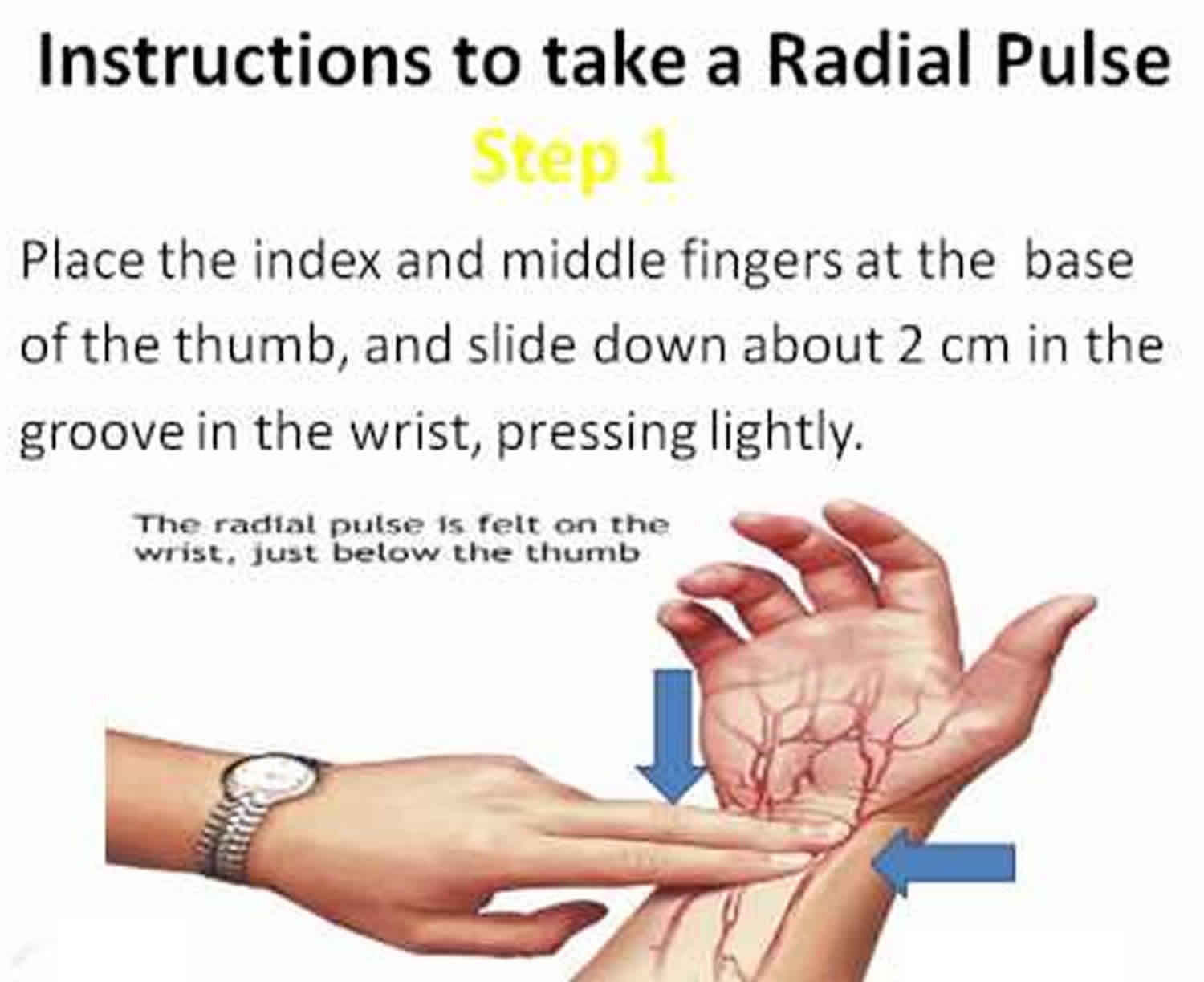
Radial pulse how to#
How to choose the right blood pressure monitor.How do I check my pulse? (2015, March 18).Examples of pre-market submissions that include MMAs cleared or approved by FDA.You can learn more about how we ensure our content is accurate and current by reading our editorial policy. We link primary sources - including studies, scientific references, and statistics - within each article and also list them in the resources section at the bottom of our articles. Medical News Today has strict sourcing guidelines and draws only from peer-reviewed studies, academic research institutions, and medical journals and associations. If there are concerns about palpitations or ectopic beats, however, visit a doctor. Ectopic beats are very common, are usually harmless, and do not need any treatment. You might also feel that your heart has missed or “ skipped” a beat, or there has been an extra beat. If you feel that your heart is beating out of rhythm or at an unhealthy speed of under 40 bpm or over 120 bpm, and this can be felt when taking a pulse, discuss this with a doctor.

However, it is normal for the heart rate to vary in response to movement, activity, exercise, anxiety, excitement, and fear. Athletes, for instance, may have a resting heart rate of just 40 to 60 bpm. In general, people with better physical fitness will have slower heart rates than pepole who exercise less. The heart should beat steadily, with a regular gap between each contraction, so the pulse should also be steady.Īs a general rule, adults will have a resting heart rate of 60 to 100 beats per minute (bpm). The video below, presented by a nurse, explains how to take a pulse: on the top or the inner side of the foot.on the inside of an elbow when the arm is outstretched.These are the main arteries that run from the heart to the head. This is the pulse running through one of the carotid arteries. Gently press into the soft groove on either side of the windpipe.

The pulse can also be found on the neck using two fingers in a similar way.

Here are the simple steps needed to take a pulse at the wrist. Note the rate, rhythm, character, amplitude and compare both pulses.
Radial pulse skin#
Share on Pinterest Take the wrist pulse for an easy way to monitor heart rate.Īrteries run closely to the surface of the skin at the wrist and neck, making the pulse particularly easy to find at these points. Method Of Exam Simultaneously palpate both radial pulses.


 0 kommentar(er)
0 kommentar(er)
